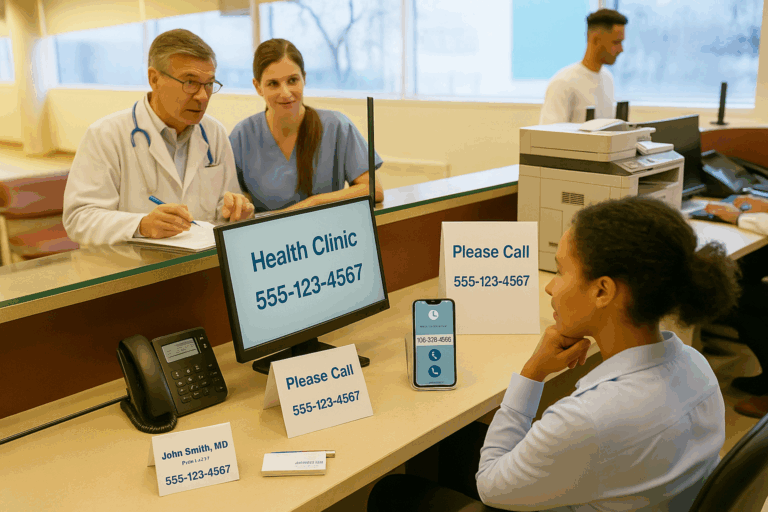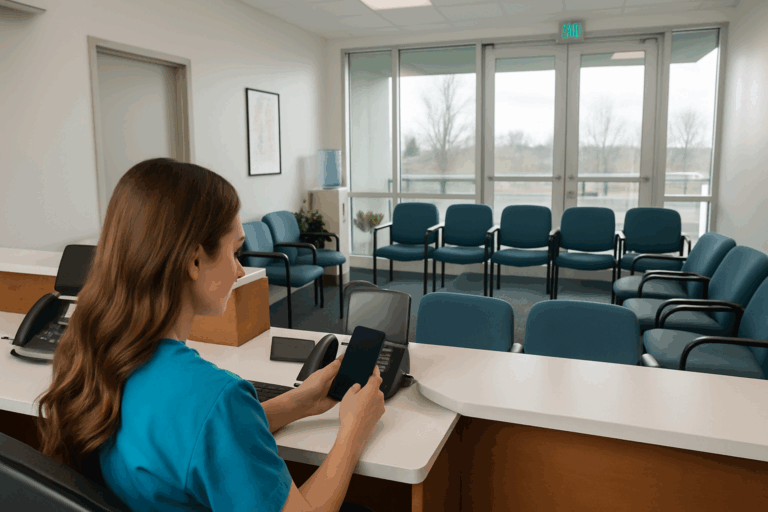Any healthcare provider can attest to the headaches associated with offering 24/7 care to patients through on-call coverage.
On the one hand, on-call coverage is critical for maintaining the productivity of healthcare organizations that offer after-hours care, and it’s essential to patients as well. (After-hours access to primary care practices has been proven to lower the frequency of E.R. visits and reduce the amount of unmet medical needs.)
However, on the other hand, when healthcare organizations don’t have an efficient on-call process in place, things can go downhill very quickly.
(For the purpose of this post, an “on-call process” refers to an organization’s procedures and systems for handling everything from after-hour calls to managing on-call scheduling and patient communications.)
When healthcare providers lack an efficient on-call process, this can lead to miscommunication about which medical professionals are covering after-hours shifts. It can also create challenges in reaching those on-call medical professionals in a timely manner. When this happens, the organization suffers—but even more importantly, the patients suffer.
Why? Because on-call coverage and communication mishaps can cause delays in:
- Consult requests
- Medication requests
- Communications about changes in patient vitals
- Delivery of patient treatment, etc.
Delays like these not only lead to a poor patient experience but can also negatively impact patient outcomes. In the most extreme cases, issues related to on-call coverage can even be a life-or-death matter for a patient.
So, what’s the biggest problem preventing healthcare providers from achieving efficient on-call process?
Oftentimes, the problem lies in these providers’ technology.
Using outdated methods for managing after-hours calls and on-call scheduling
When healthcare offices and organizations rely on outdated and cumbersome methods for managing their on-call coverage, errors and care delays are much more likely to occur.
These include issues such as the following:
- Patients cannot reach a medical professional promptly after hours.
- Calls are routed to the wrong medical professional.
- Calls are routed to the right medical professional using the wrong phone number (resulting in the patient being sent to voicemail, delays in response time, or inconvenience).
- Important messages for medical professionals are incorrectly recorded or delayed in delivery.
Healthcare organizations are usually most susceptible to these problems when they don’t have:
- An iron-clad process for handling their after-hours calls
- Technology that allows them to manage their medical on-call scheduling and communications easily
Without after-hours call coverage (such as through an automated system that helps direct patients to the right on-call medical professional), patients are forced to leave voicemails—and this can result in a poor patient experience, especially if the patient is dealing with the stress of an urgent medical need. They’re quickly trying to determine the next steps for their care. (Research shows that patients largely don’t know where to receive care for various symptoms.)
Additionally, on the healthcare provider’s end, if the organization lacks the necessary technology for streamlining their on-call procedures, they’re forced to do everything manually—which may involve juggling numerous spreadsheets and systems to retrieve their on-call staff’s scheduling information and contact profiles. When a multi-spreadsheet or multi-system process is used, it’s much more time-consuming and challenging to keep staff scheduling information up-to-date across the board—making it even more difficult to reach the right on-call medical professional at the right time.
So, what does efficient on-call technology look like?
To allow for a smoother on-call process and eliminate potential issues that may arise, healthcare organizations should invest in software that provides a centralized hub for all their on-call coverage needs.
The ideal on-call software should allow the healthcare provider to:
- Use an automated system to direct patients who are calling after hours to the appropriate on-call medical professional.
- Manage all on-call scheduling information directly in a single platform, rather than having to rely on numerous spreadsheets and systems.
- Update all on-call scheduling information in real-time. (As soon as a medical professional updates their schedule, everyone should have instant access to the latest changes to that professional’s schedule.)
- Allow medical professionals to set their preferred methods of contact (using a cell phone number, landline number, notifications through the platform’s mobile app extension, etc.).
- Set up automatic shift reminders for all on-call medical staff, so there are less likely to be unexpected gaps in coverage.
Additionally, for multi-site healthcare organizations, an on-call platform should have the capability to streamline and manage on-call practices for not just one location, but numerous locations. And, of course, the communications platform should be HIPAA-compliant to ensure that patients’ protected health information is kept private and secure. (Here are some additional tips for how to find the right HIPAA-compliant communications system for your organization.)
RingRx: An all-in-one solution that helps healthcare providers handle after-hours calls and on-call coverage
If your healthcare organization is looking for an on-call solution that offers all the features mentioned above, you may want to consider using RingRx.
RingRx is an all-in-one, cloud-based communications platform that is designed to simplify and improve staff and patient communications for healthcare provider organizations. RingRx is a HIPAA-compliant communications system and doctor phone app that is built for healthcare organizations of all sizes—from small, independent medical practices to multi-location clinics, regional medical centers, hospitals, and healthcare business associates.
In addition to RingRx’s on-call support, the platform also allows medical professionals to send HIPAA-compliant phone calls, text messages, faxes, and mobile app communications for when they’re on the go.
To learn more about RingRx and how it can help you improve efficiency within your organization, give us a call today or sign up for a free trial.




